| Multiple Mirror Effects in Movies | ||
Orpheus (1950) |
||
| Spoiler Alert ! Some of these pictures and descriptions may give away plot details that you might not want to know before watching the film. |
||
 |
 |
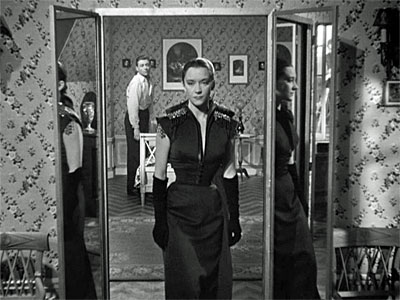 |
| This classic film, directed by the great French artist Jean Cocteau, is an adaptation of the Greek myth of Orpheus, a great poet who traveled to the underworld to bring back his dead wife. In Cocteau's version, Orpheus (Jean Marais) falls in love with a Princess who represents Death (Maria Casares). Death uses mirrors to move from one place to another, including down to the underworld. Most, but not all of the mirrors used for travel are three-part mirrors with multiple reflections. According to an IMDB comment, Cocteau filmed characters moving through mirrors without special effects, using two identical rooms with an empty frame between them, and doubles for the actors, but it appears that the side mirrors of the three-part mirrors are actual mirrors. Death comes through a mirror door to take Orpheus' wife Eurydice at approximately 45:22. |
||
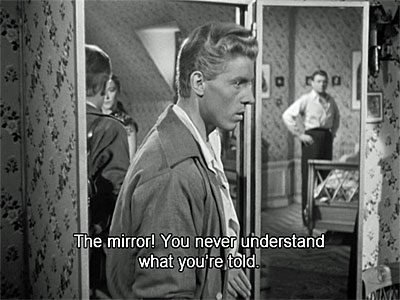 |
 |
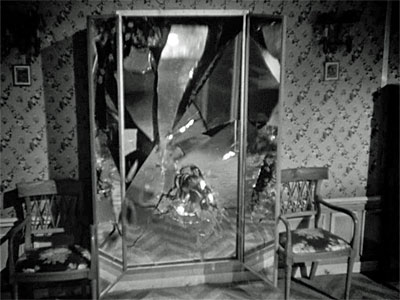 |
| We also see Death's servant Jacques (Edouard Dermithe) moving through mirrors. In one scene, after he passes through a mirror that was shattered, we see it re-assemble, filmed in a reverse slow-motion. |
||
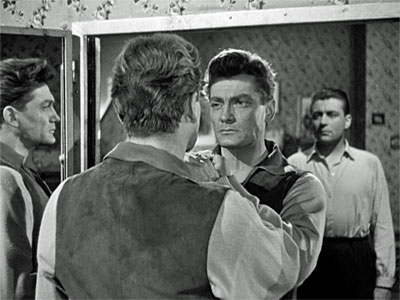 |
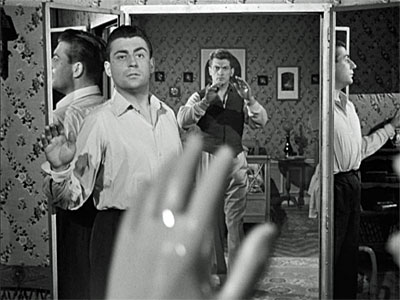 |
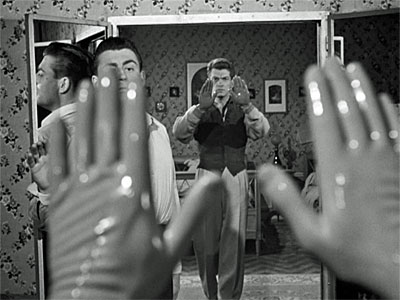 |
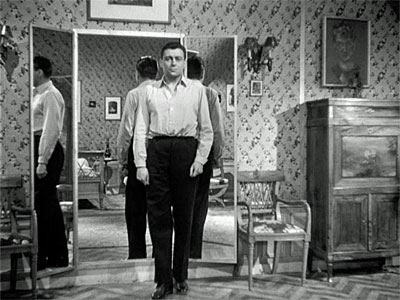 |
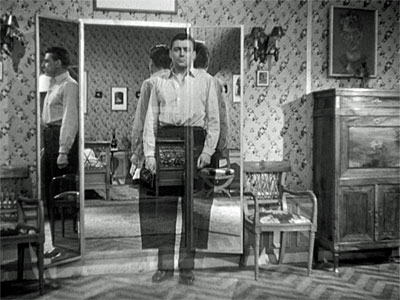 |
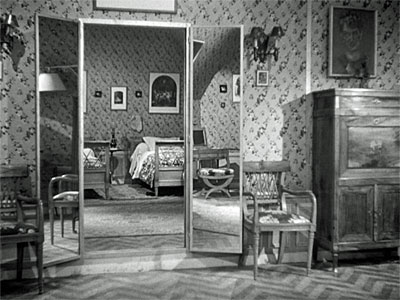 |
| Death's chauffeur Heurtebise (Francois Périer) can also travel through mirrors, and he gives Orpheus some gloves that let him also move through the mirrors. Huertebese dissolves through a mirror backwards at approximately 1:32:45. Huertebese helps Orpheus go through the mirror to find Eurydice at approximately 56:52. |
||